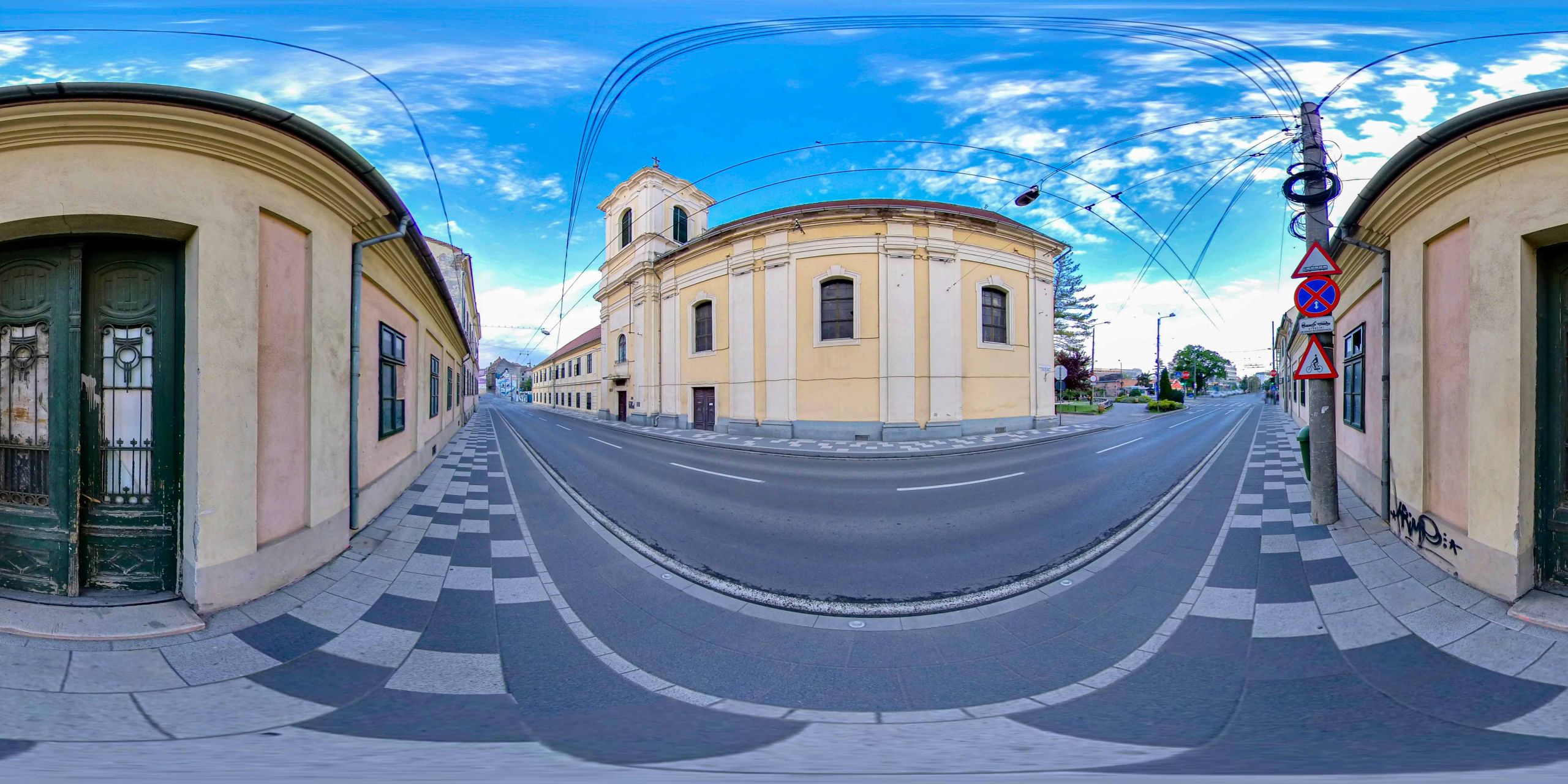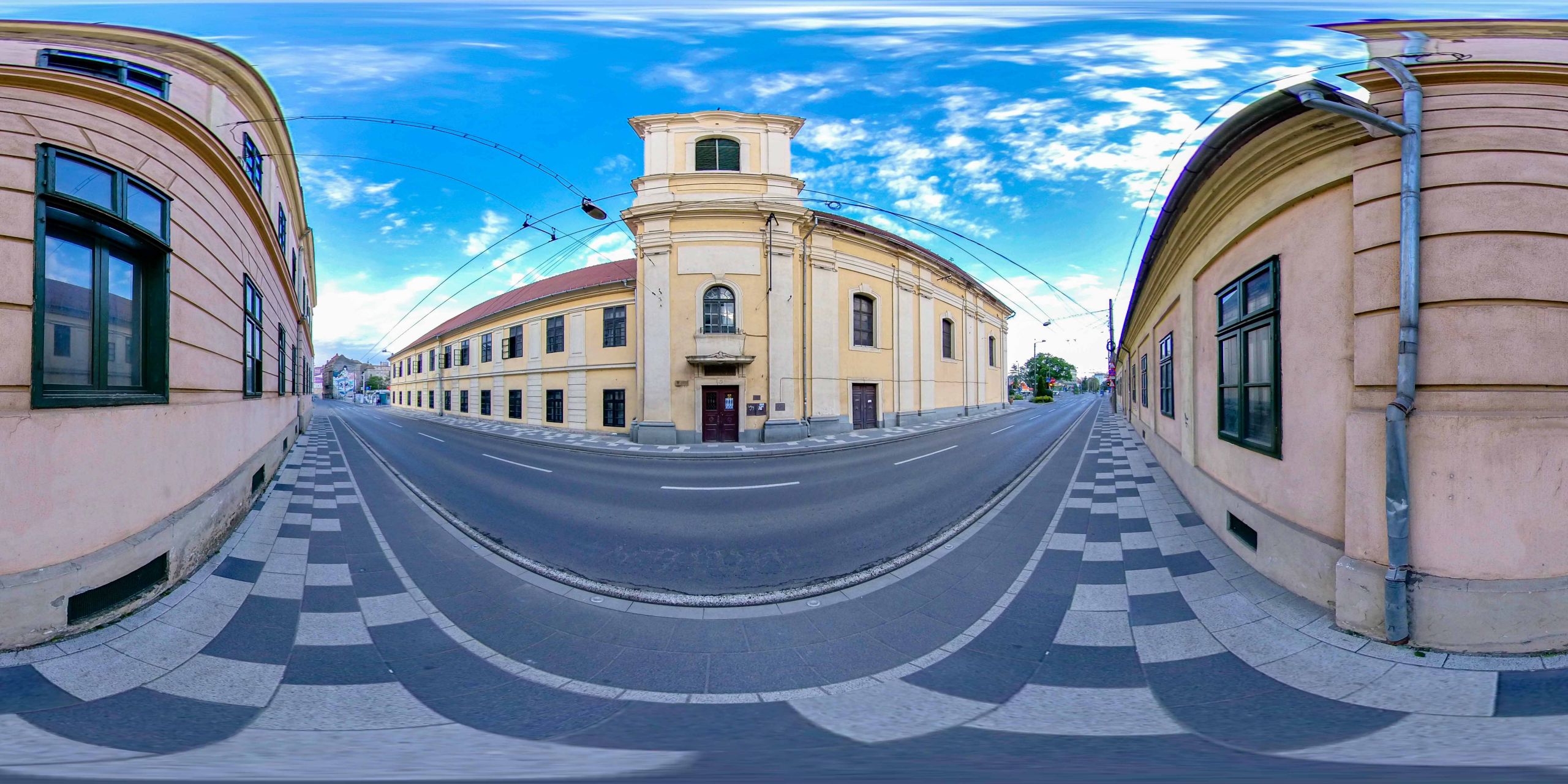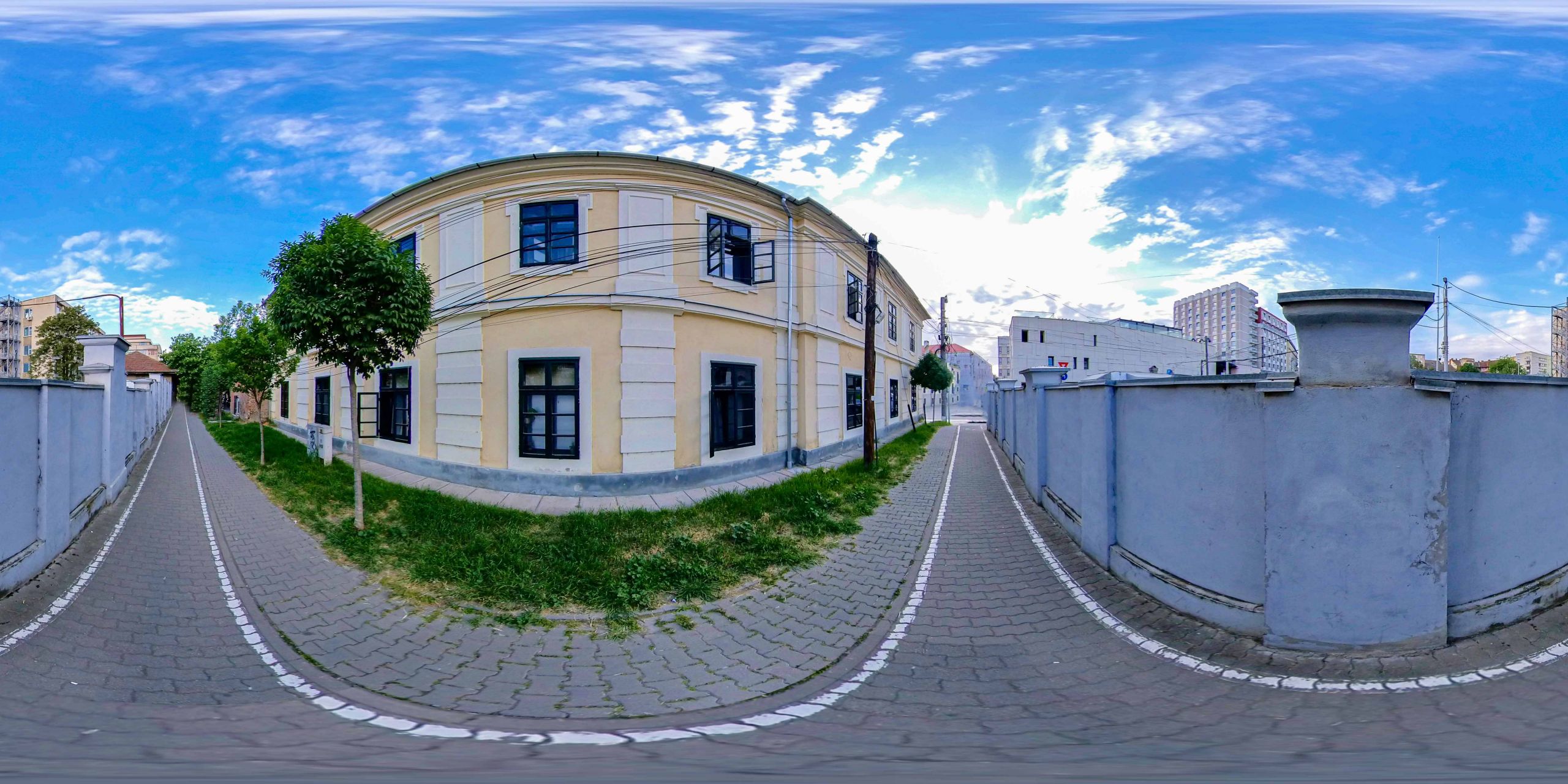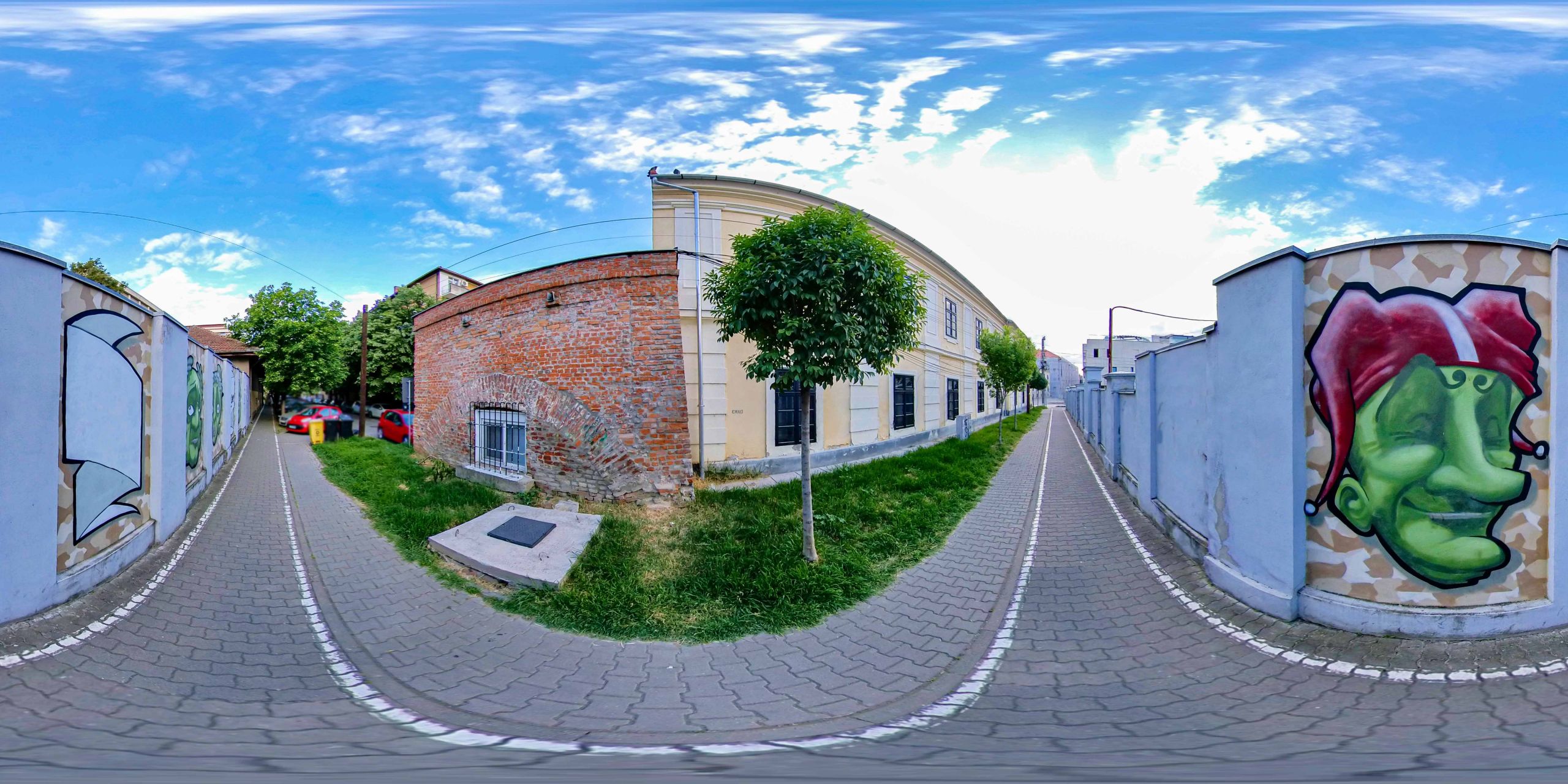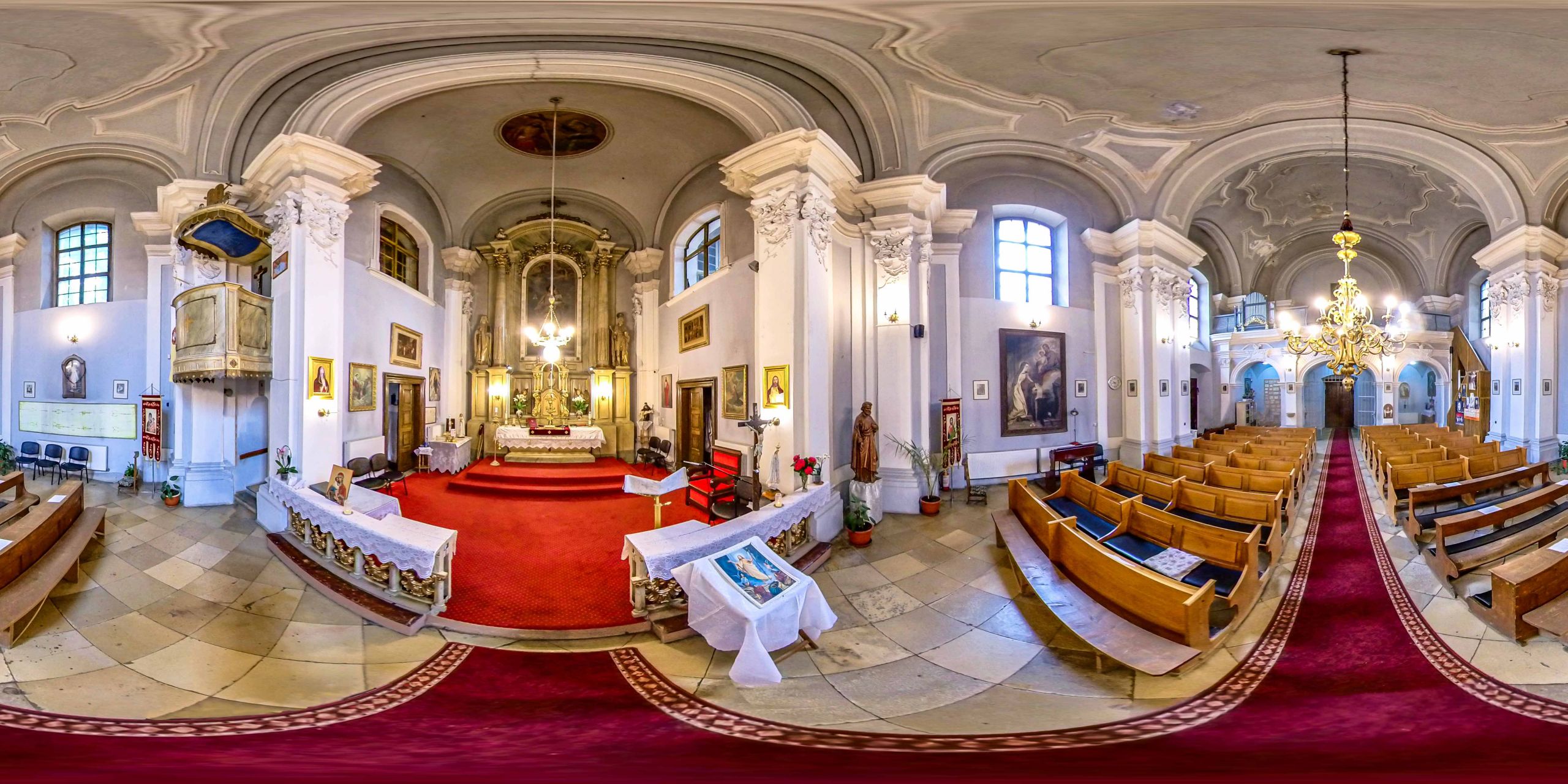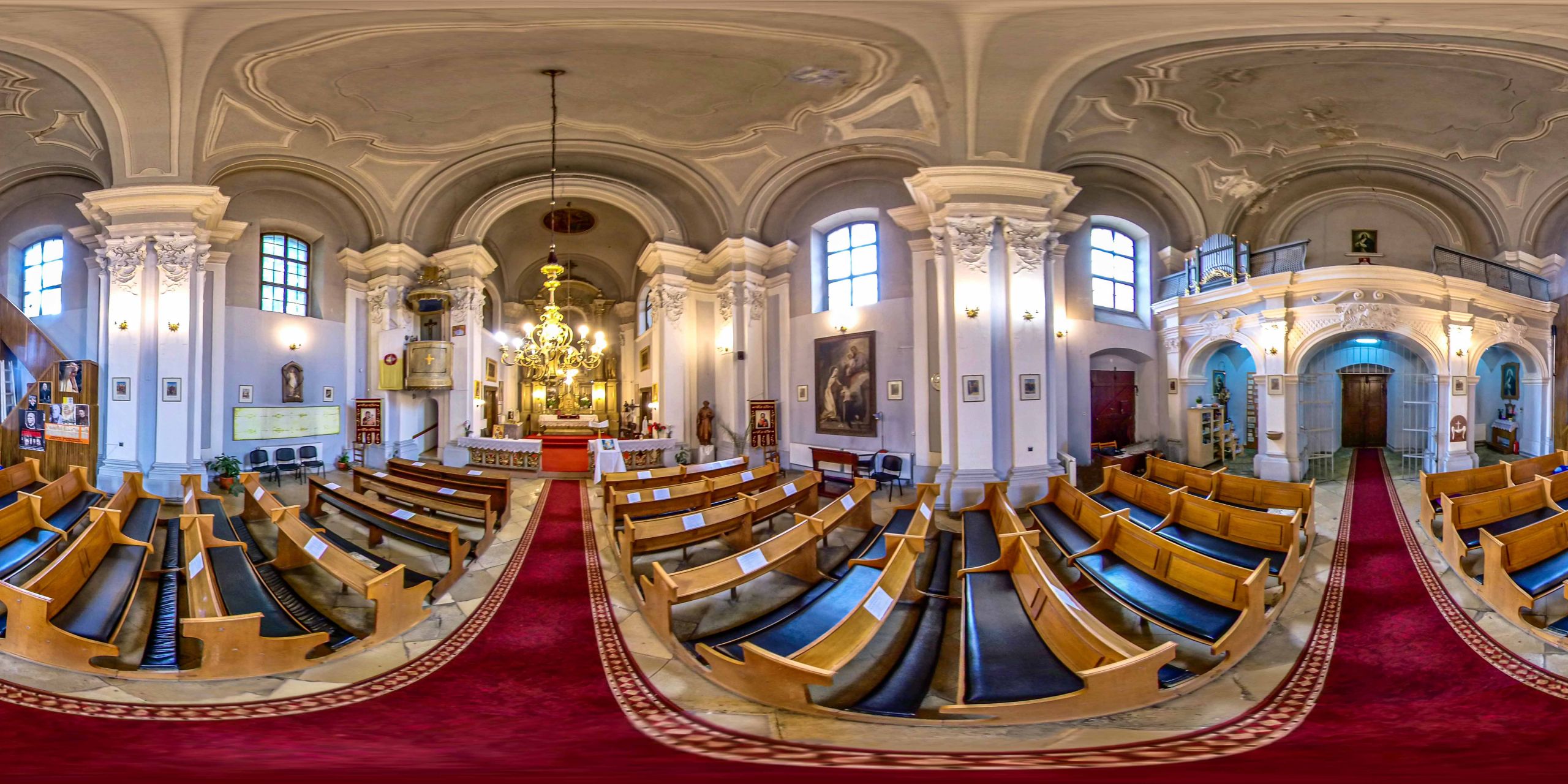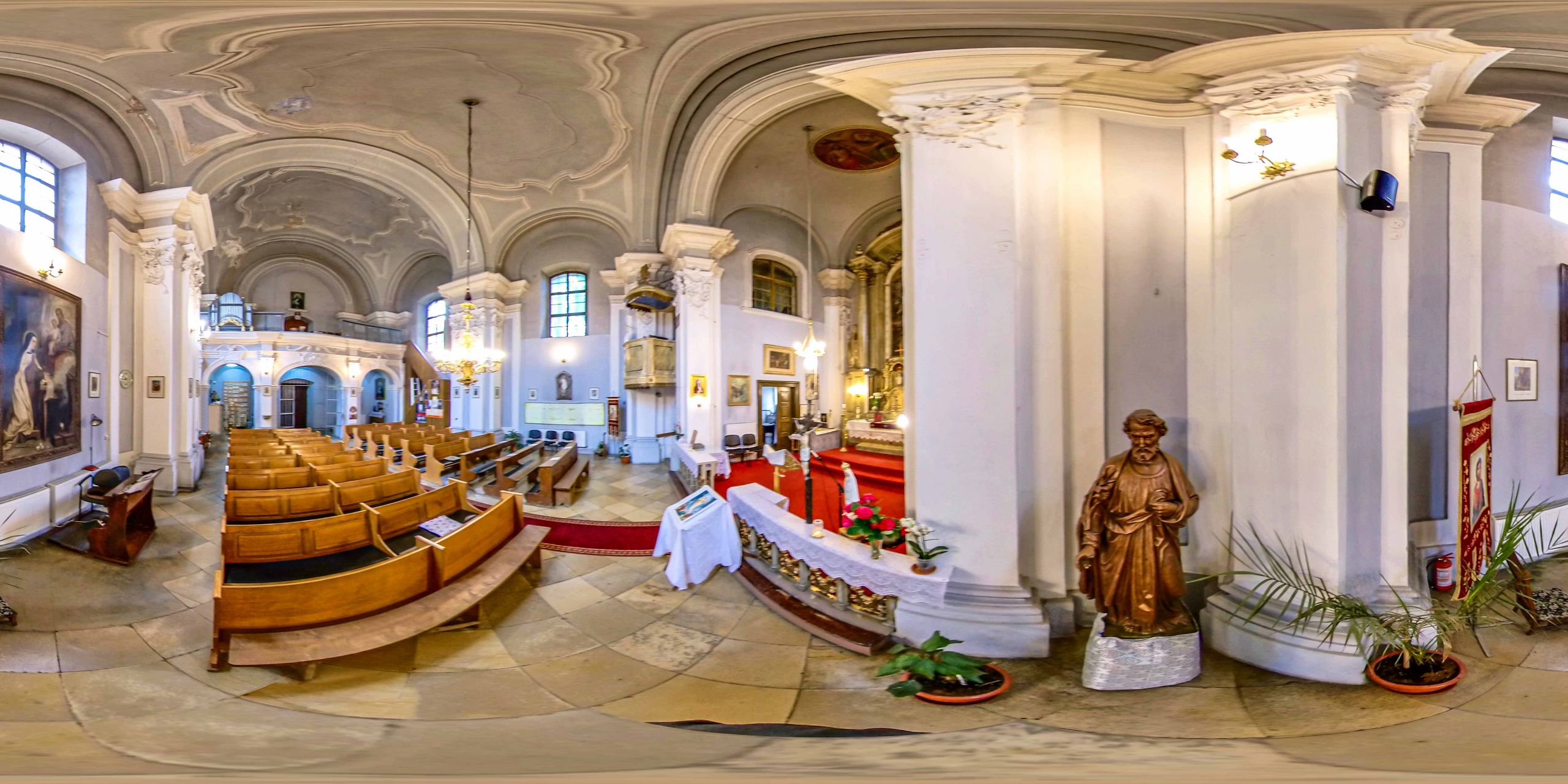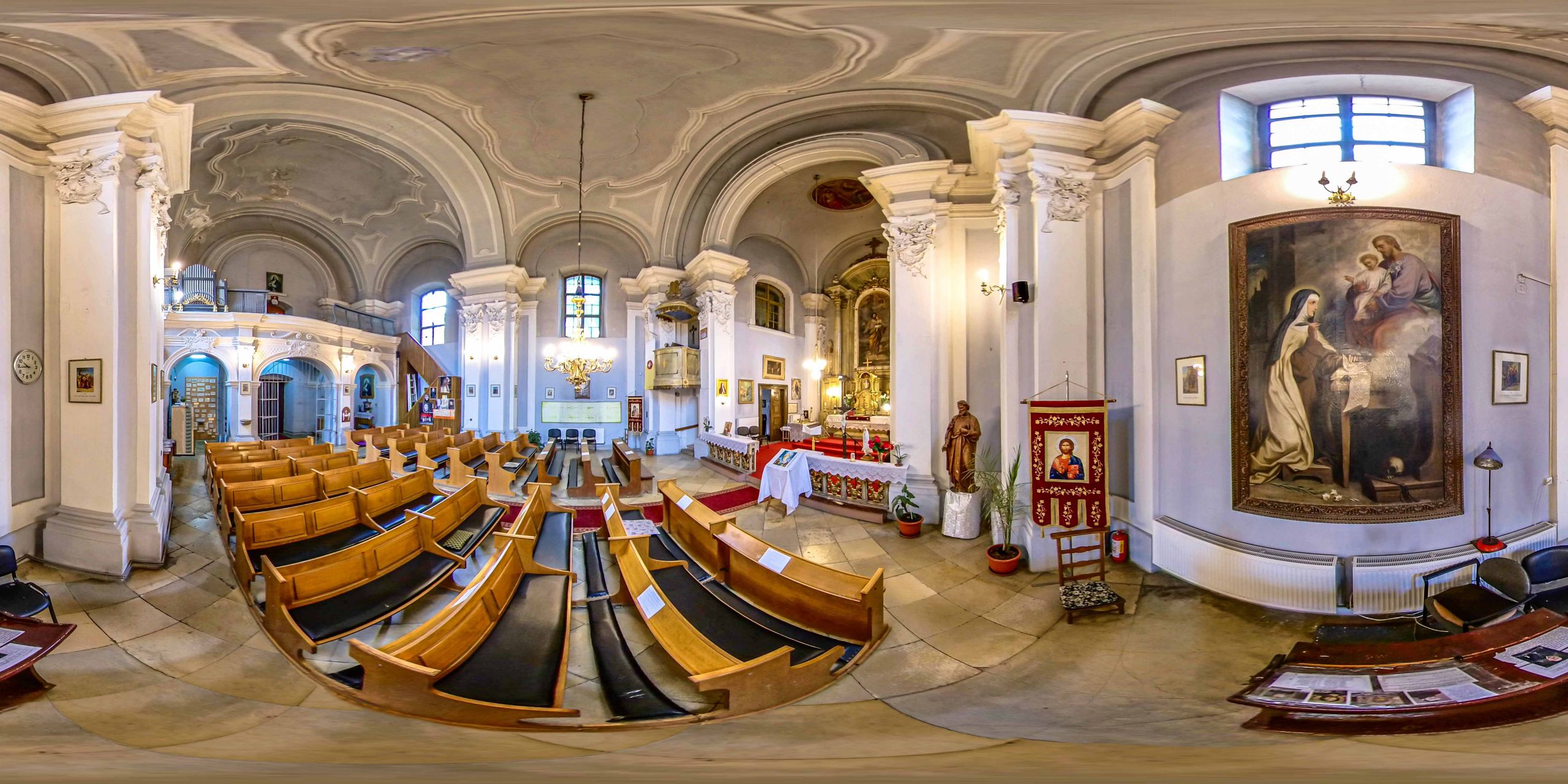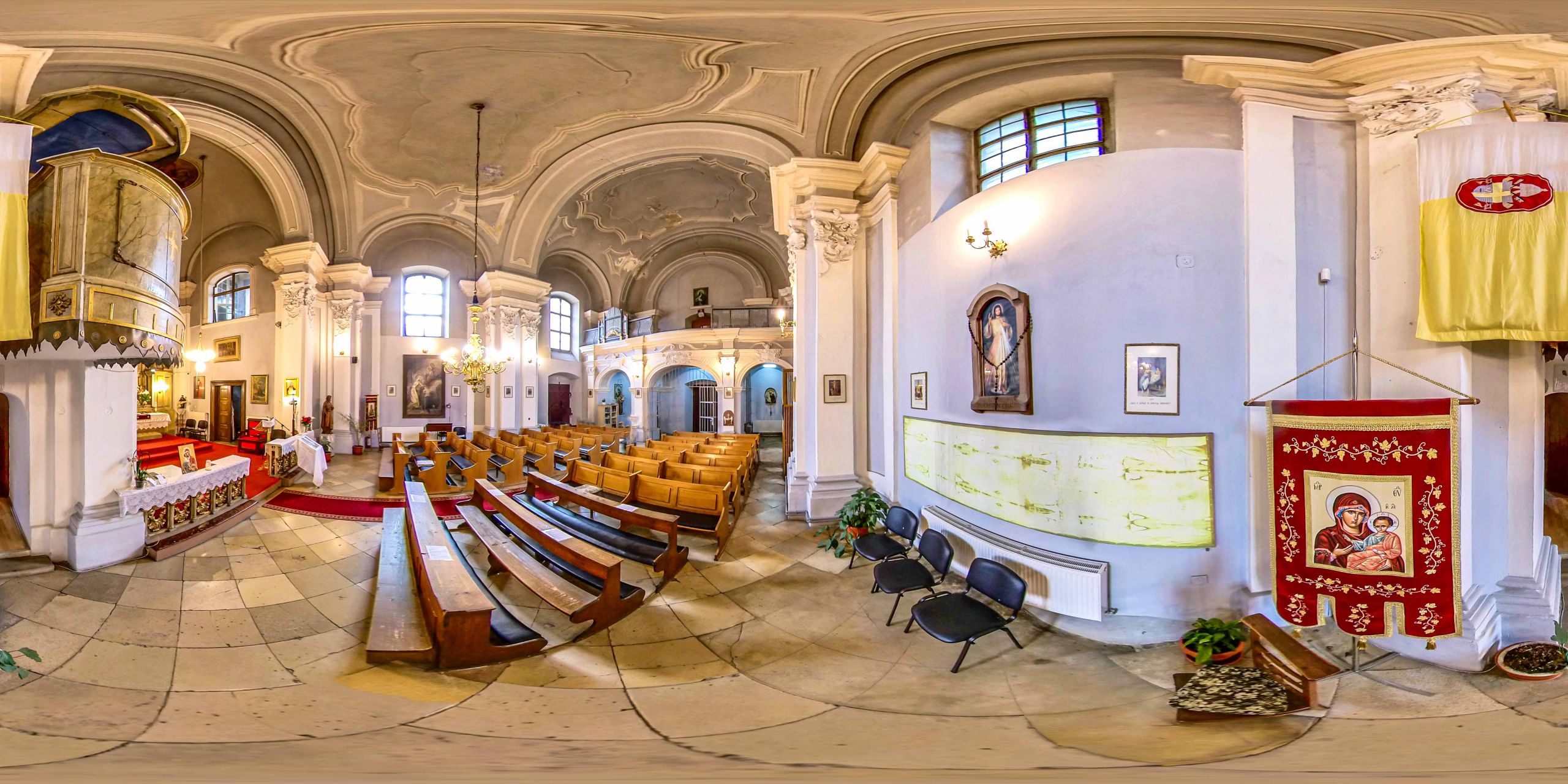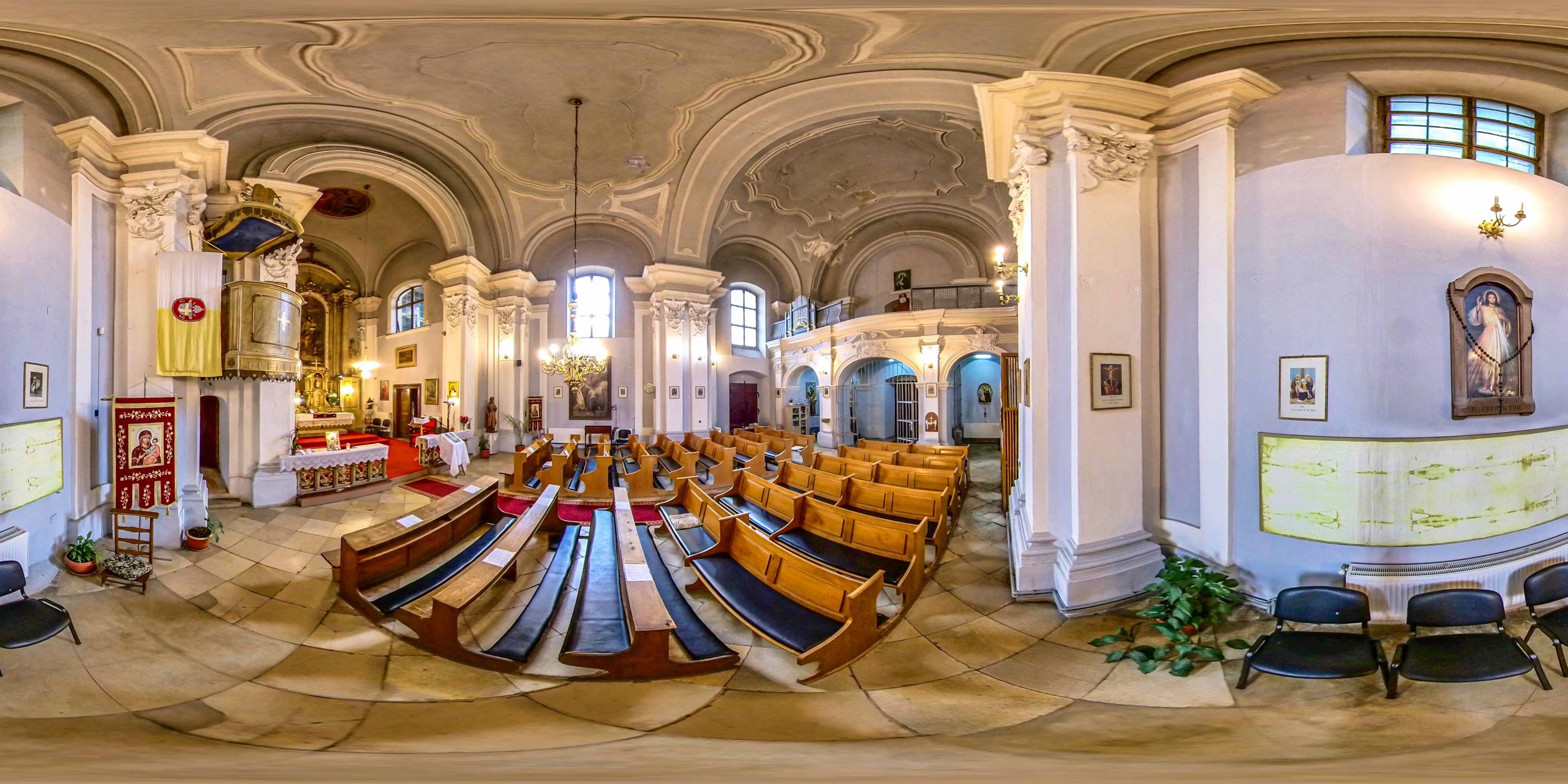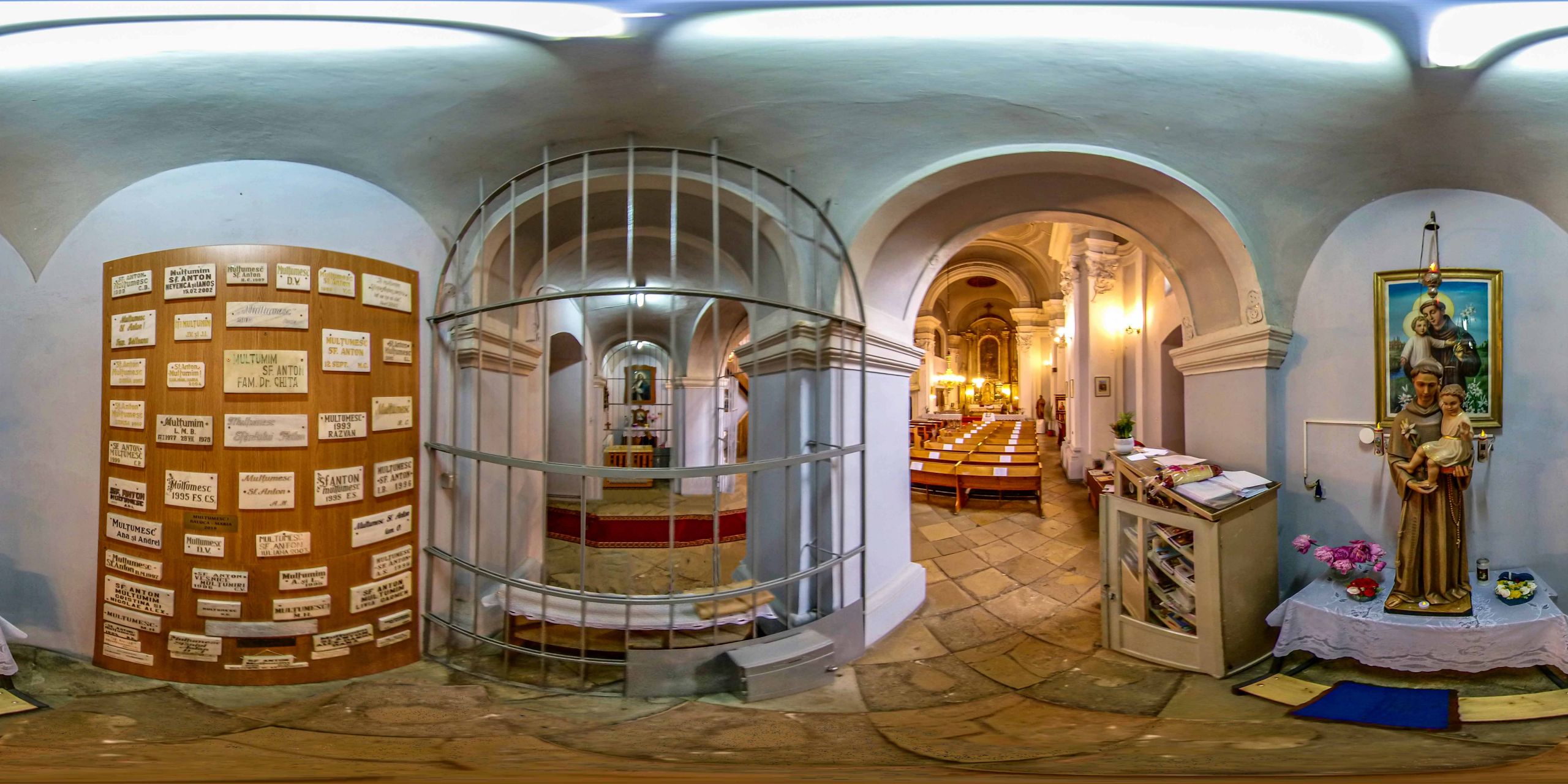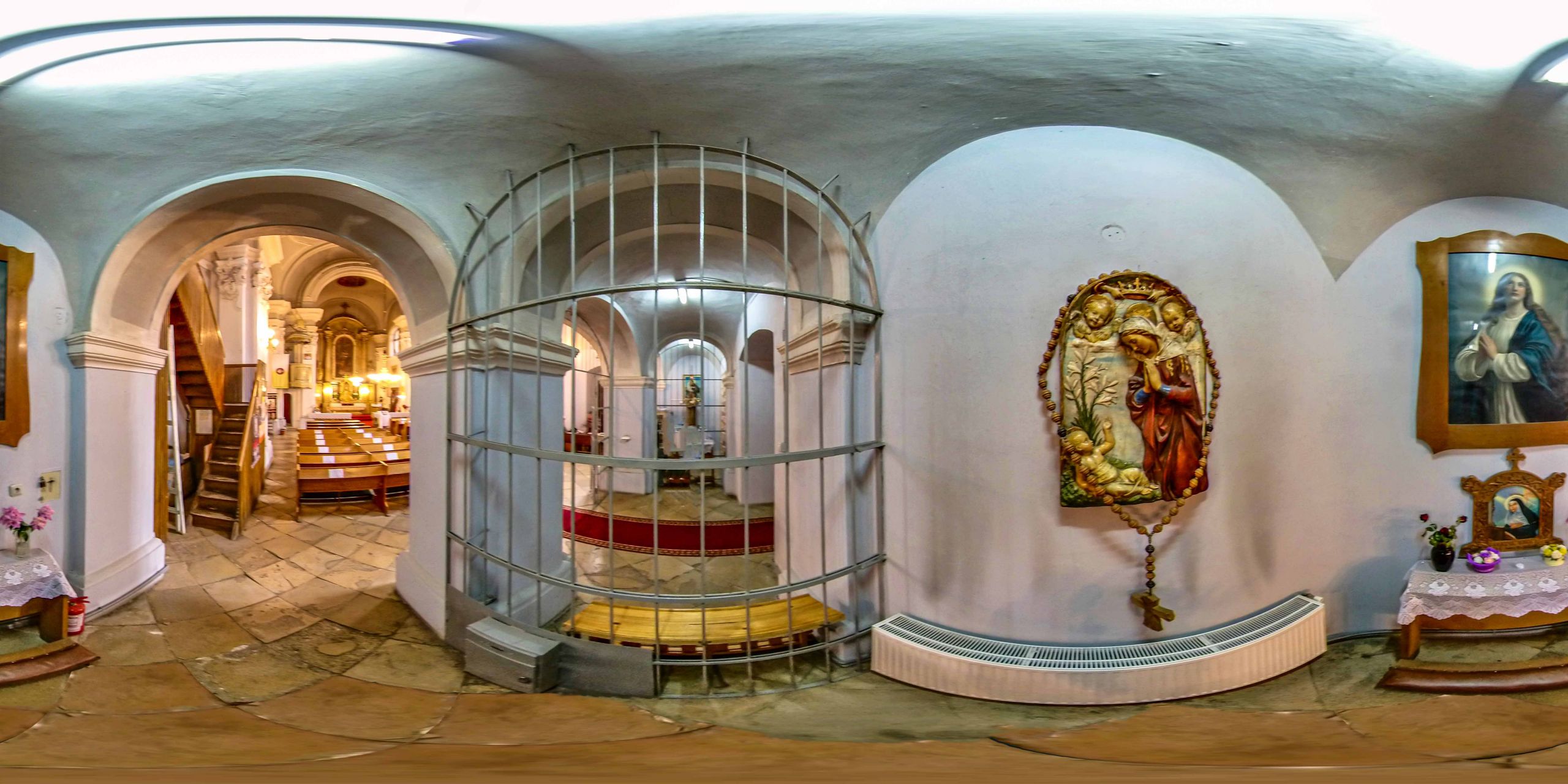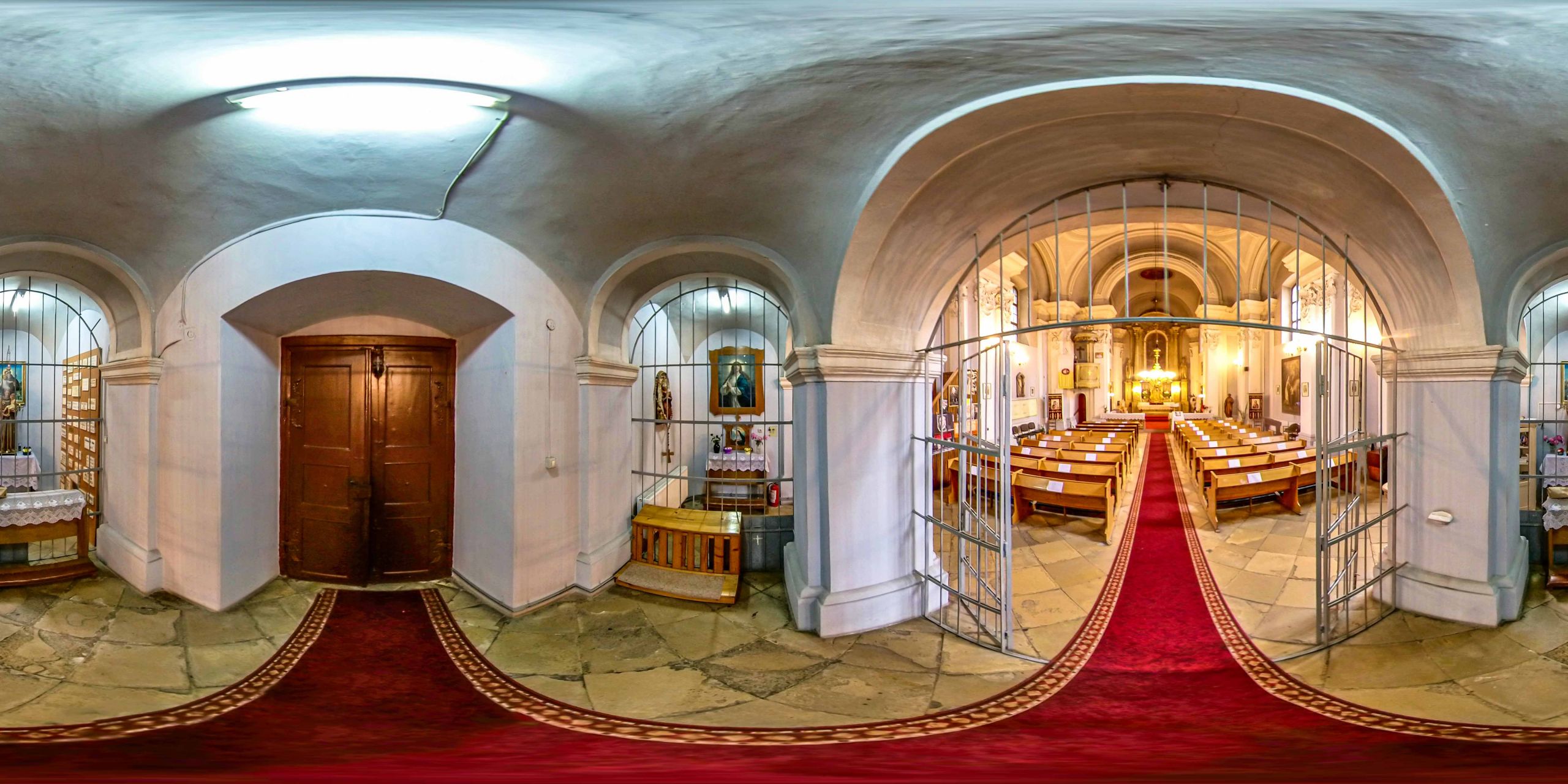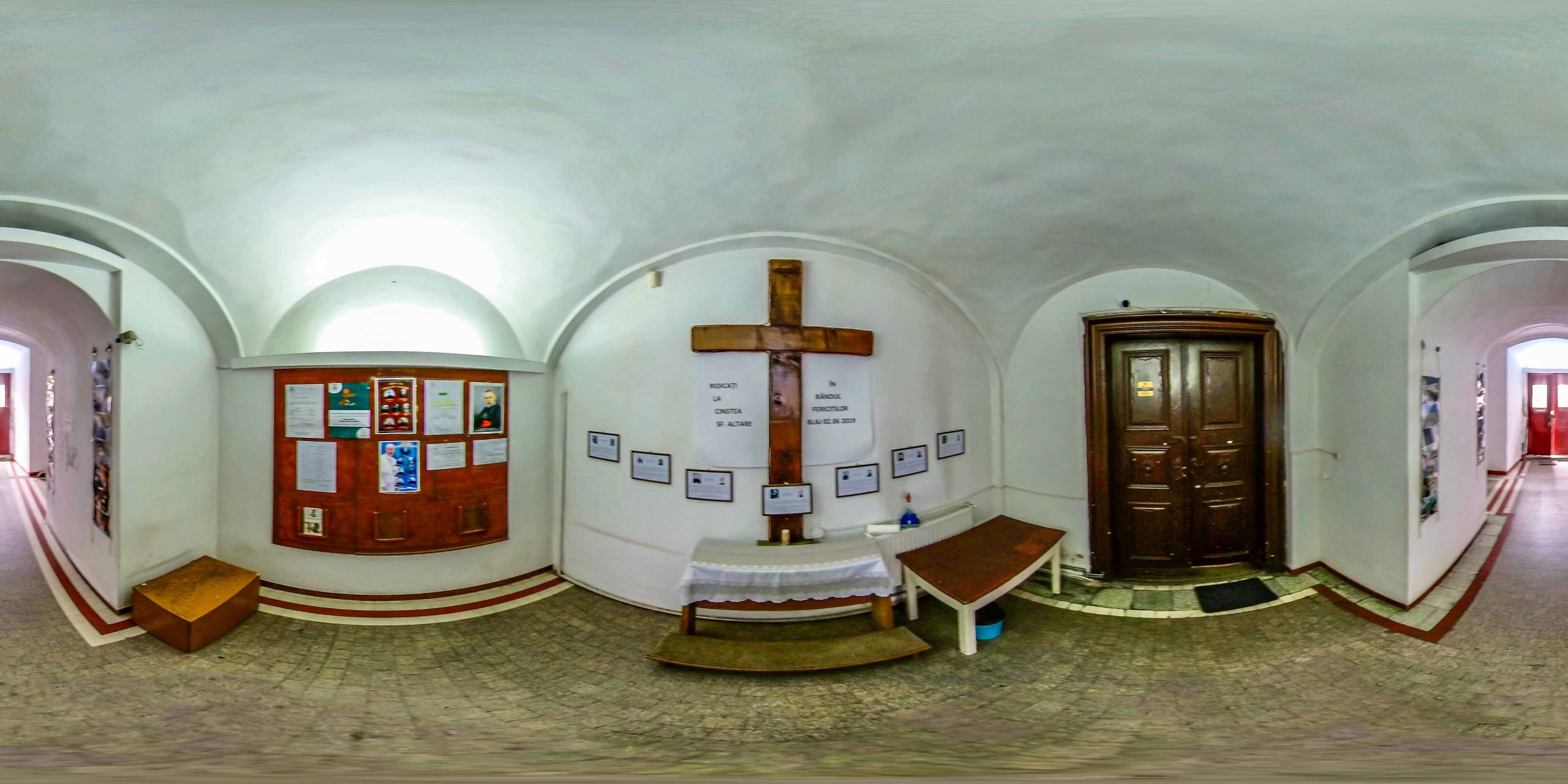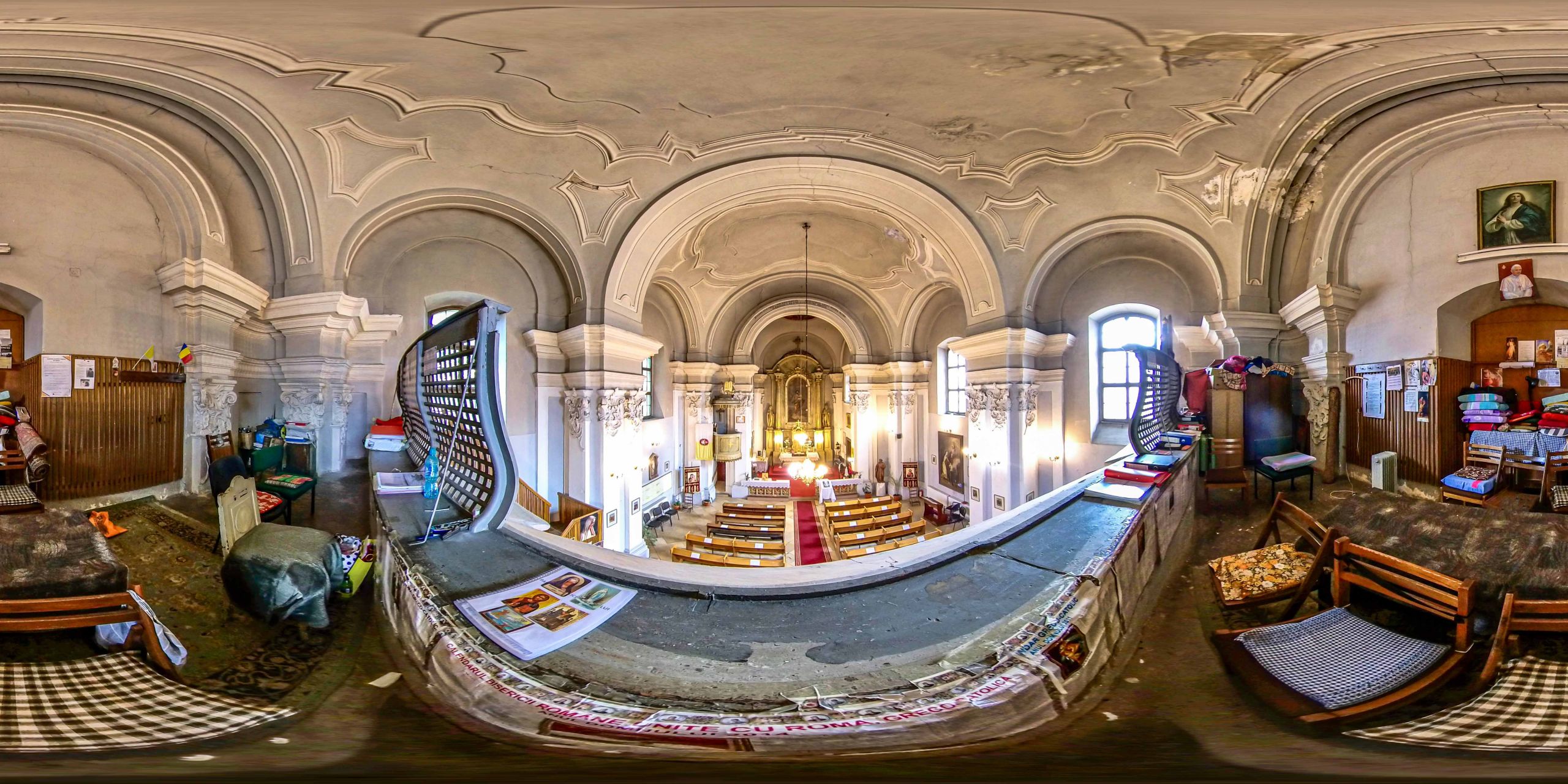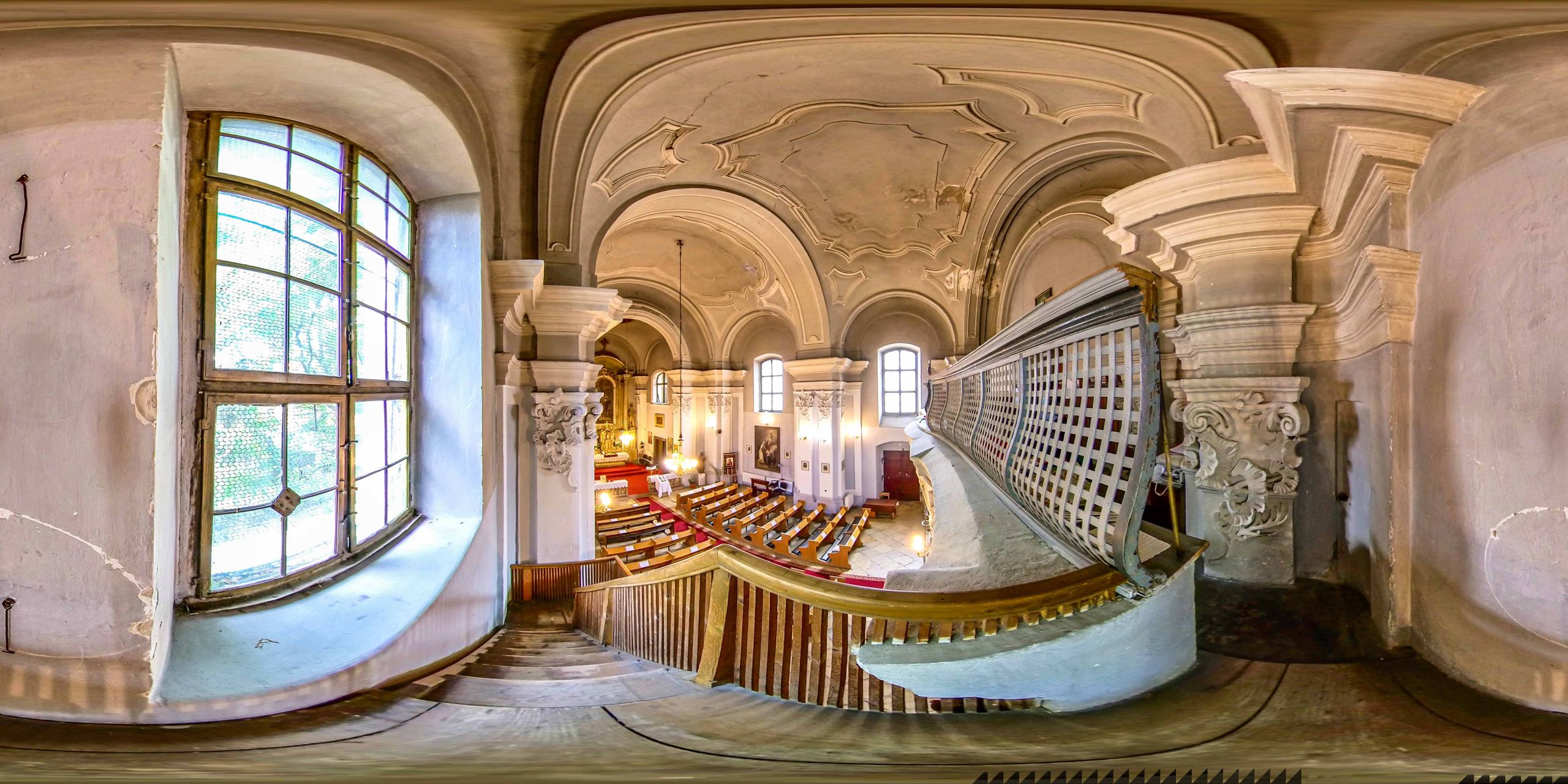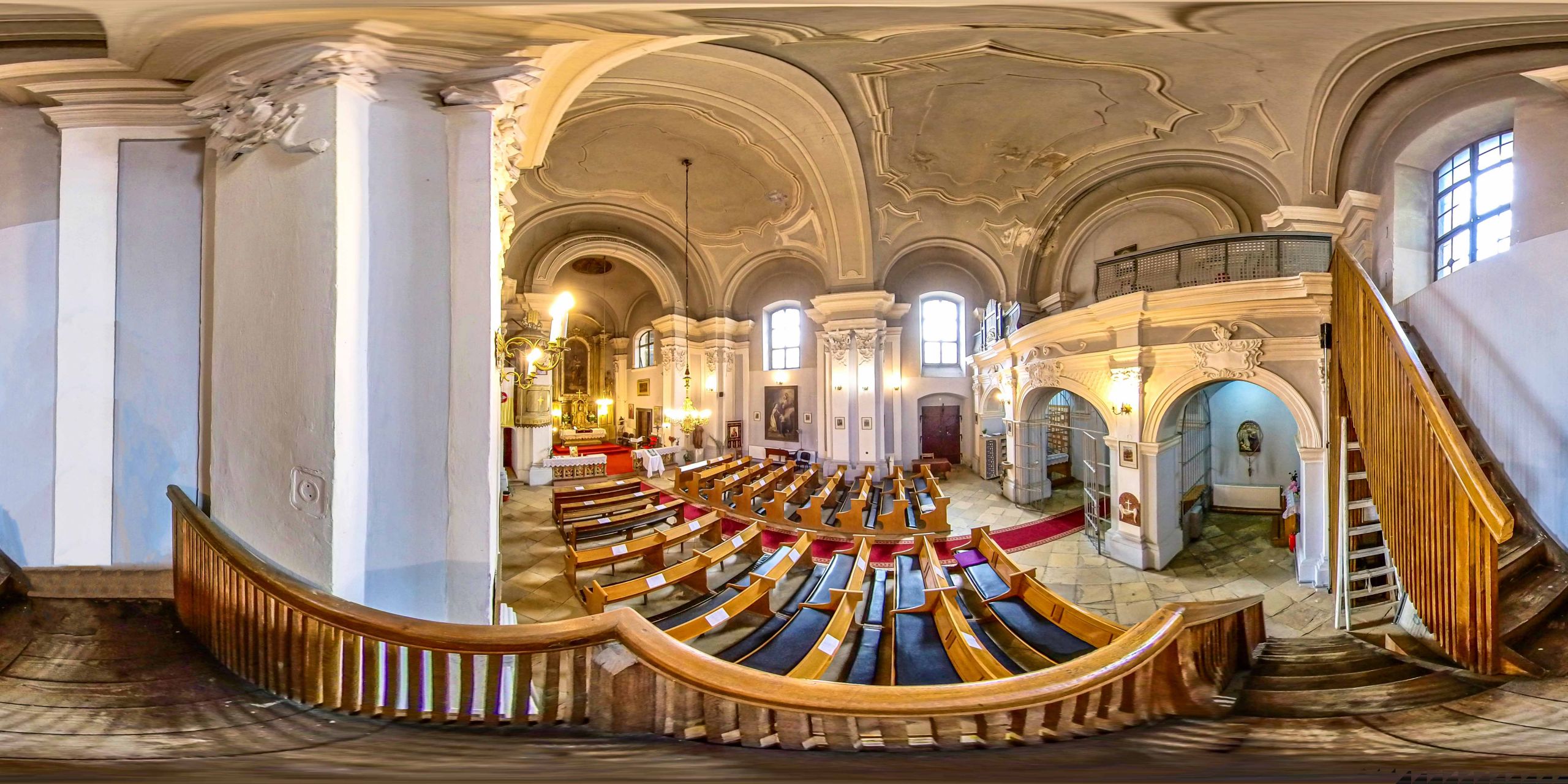The cornerstone of the Greek Catholic Church, built with the hospital, was laid in 1737, and was founded by the "Association of St. John of Nepomuk for the Worship of the Blessed Virgin", which was then entrusted to the monks of the Order of the Misericordians.
Listen to the audio version.
The cornerstone of the Greek Catholic Church, built with the hospital, was laid in 1737, and was founded by the "Association of St. John of Nepomuk for the Worship of the Blessed Virgin." After the building was completed, the association, represented by Count Andreas Hamilton, entrusted it to the monks of the Order of Mercy. They were also popularly called "black popes" and cared for the sick, the elderly, and the suffering. The church, whose architects were Johann Lechner and Caspar Dissel, benefited in 1748 from a donation of 60,000 florins from Empress Maria Theresia. The money was donated to the church and the hospital. She was blessed and then given away to the cult in 1757 by Bishop Franz Anton Engl of Wagrain.
On the night of July 6-7, 1849, during the siege of Timisoara by Hungarian revolutionary troops, the church was hit by an artillery projectile, being largely destroyed. In 1851 the church was rebuilt in Baroque style. The oldest organ in Timişoara is partially preserved inside the place of worship.
Next to the church is the Hospital and the Monastery of the Misericordians, this building was also burned down on the night of July 6-7, 1849 and rebuilt two years later. The first pharmacy in Timișoara operated in the hospital. Nowadays the Ophthalmology Hospital is located in the building of the former hospital of the Mizericordienilor.
In 1990, the Roman Catholic Episcopate gave the church to the Greek Catholics in Timişoara.
Bibliography:
Matei Barbu, Timișoara: churches and temples , ArtPress Publishing House, Timisoara, 2012.
Mihai Opriș, Mihai Botescu - Historic architecture in Timișoara Tempus Publishing House, Timisoara, 2014
The Greek Catholic Church
Listen to the audio version.
“The Citadel, which had been very small in Charles Robert’s time (roughly between the Hunyadi Castle, nowadays housing the Museum of Banat, and Liberty Square), was enlarged by Ioan Hunyadi to such an extent that it encompassed the civilian dwellings that had sprung up outside the old walls - a phenomenon that was very common to all medieval citadels, and which led, at that time, to the emergence of a new social class, named after the Citadel. The new neighborhoods that emerged later on surrounded the citadel like satellites attracted and repelled at the same time, by the military-trade-industrial planet, which kept shining in the armor of Mars.” (Mircea Șerbănescu, Timișoara, Tineretului Publishing House, p. 73-74).
Man surrounded by pigeons
by Ana Maria Gurzun, 9th grade
National High School "C.D. Loga" from Timișoara
I saw him everywhere. He was the ghost that haunted my dreams and the city. It was the perfect mix of comfort and danger, because his eyes were gentle but full of sadness, and his hands were dry and worked until they bled. I passed him so many times, ru rudely, never saying hello, but never forgetting him. To me he was more than what he was to everyone, to me he was more than man surrounded by pigeons.
Seeing him disturbed me. From my childhood days, when I went to play with the wonderful gray birds, he was there, feeding them. With so much kindness in his heart, he didn't have enough for himself, but he gave to the poor creatures and took care of them. Seeing me so interested in his long white beard and his gentle features, he invited me to take bread crumbs from his hand. I saw then the cuts on his hands and the sadness they might have carried, but at that age of innocence, I thought it could all disappear with a kiss, as my mother used to kiss me. So I took her hand and kissed one of her fingers lightly, glad that I could remove the scars. I took some bread crumbs and started feeding the adorable pigeons. When I turned around, excited to talk to my new friend, he was gone. Sadness numbed my body and disappointment overcame me.
I grew up scared of stray street people. I was warned to stay away from them. It was like an unwritten rule in my mind that they were mean and dangerous, full of vengeance and gratuitous anger. I saw the bearded man more times than I would have liked. I was ashamed of my stupid but innocent act for which I had been punished. It was wrong to be angry with him while his eyes were still loving and his hands still scarred.
At night I used to see him, in front of my window, glittering in the street lights, sitting on a bench in Liberty Square. He was there sometimes even at eleven o'clock, looking at the sky with a cigarette in his hand. He was the memory of my youth and, for some reason, I had to erase that image from my mind. I had to convince myself that my youth was wrong about this man and that he was never as good as I had imagined him to be.
We sat there in the cool night air while tourists and lovers still haunted the city center, sharing smoldering remarks and whispers. Then I sat next to my ghost. And I watched the stars.
- Do you mind if...? I asked as he nodded politely, away from the world he knew. The only world he lived in now was the world of gods and stars.
- It's a beautiful night. I love it without all the noise and bustle of the day.
- Eh... it's not so bad. People make the city alive.
- Well, I think it's pretty nice all by itself. The lights shine differently this time of day. Is it always this beautiful?
- I don't know, maybe, I don't spend my nights here very often.
- Got a place of your own?
- Yeah, near the 700 Market.
- Oh, so not that far! I live right here in an apartment, but I've never stopped to look closely at the stars.
- Nobody realizes it, really. We don't realize how lucky we are to spend our days under this sky. I should know... (I saw in that moment how his eyes darkened with memories that he probably wished he could forget, that seemed to haunt him). Everyone is so busy with their troubles and problems, but they don't seem to seek solace in what is in front of them. In the moon, in the wind. Because it seems foolish to them. They want to forget the dreams and hopes of their youth so they can be serious and respected adults. I blame your generation, young lady, for wasting your time, for spending your life in front of colored screens, but they don't want to remember their times. My generation was worse.
- You think so? How so?
- Oh, miss, they were soulless. Every man for himself, only money and respect mattered to them. My father, for instance, was one of the proudest men I ever knew. He was a doctor. So you can imagine his disappointment when I decided to work in a factory. Guban, you know it?
- Yeah, yeah, the shoe factory, right?
- Yes. I've lived here all my life, in a small apartment, the one I told you about.
- And if you've lived here so long, aren't you bored of the same city? I mean, I know I'm bored, even though I've only been on this planet for 16 years.
- I could never tire of it. Oh, what a pity that would be! Timisoara is no ordinary city. You see, the sun shines on us differently than anywhere else in the world. We may not have as much fancy architecture as others boast, or the latest electronic fashions, but this... this is the city of dreamers. Of starving actors and poor musicians. They feed on the air that smells of stardust and the moonlight they pray to every night. Why do you think so many people have never left here? Because they feed on the idea that their lives wouldn't be complete without the music etched in the pavement. How many dreamers have left this universe? Oh, and looking at them is amazing! They all look so different, and I've made it my life's mission to observe them. You can tell by the way they stand or by their hands. You can clearly see their bony, tired fingers from playing the piano, or their blistered fingertips from playing the guitar too passionately. The way a dancer walks is unlike any walk I've ever seen. The grace, the posture. Same with actors who are somehow always in a role. You can tell it especially by the way they pronounce words too emphatically and by their disheveled hair.
- My God! It's like reading from a book. Now I'm a little ashamed that I can't notice such things.
- Eh, miss... these things took time. I didn't learn them overnight. The talent to observe came after years of sitting, watching and observing.
- Are you one of these artists? From what you've told me, I seem to have come across a poet.
- Oh, God, no. That would have killed my dad (says this while laughing in pain). But I loved to read. So many careless people used to leave their books behind as they rushed off to their important meetings or other things that made them forget the world they were in. So I took advantage of that. I used to steal them, read them, and then put them back a week later in the same place for maybe another lost soul in need of comfort.
- Now you've made me want to look for them.
- I'm sure you can find some. They're all over the city. You just have to look close enough.
- Sir... I wanted to ask you something. Why do you value the company of pigeons? I must be honest and tell you that all my life I've observed you like this. They've always surrounded you as if you were their close friend. As if they could understand your sorrows and your hard days.
- Because they're the only company I have left. Miss, I have no family, no friends. So there they are. Not too far from me, always there to comfort me. They also don't need much love and attention. Just a few bread crumbs and their love is guaranteed.
- I don't know if you remember, you certainly don't, but I knew you when I was very little. You see, you offered me bread crumbs to feed the pigeons one day and...
- You kissed my finger.
My face turned red with embarrassment. He just stood there and smiled a beautiful smile and then said:
- I remember you. It was right after my sons left. It was the first time in months that someone showed me love and comfort. I was so moved by your gesture and the innocent love you shared with me that I had to leave. I hope you didn't despise me at that moment. It just took me by surprise.
His words left me speechless. I smiled, thankful that my old friend recognized me, and saw a gleam of happiness in his pained eyes.
- I'm so sorry to break this night spell, he said, but you should go. It's very late, and your parents may have already called the police looking for you.
- I'll be fine, thank you. Although, uh, would you mind coming here tomorrow? Same time?
- If it doesn't rain, I'll be here, miss, he said with a charming smile.
- Oh, thank you! Good night then!
- Good night, miss.
All day long I prayed that the sky would not be so cruel that it would let the rain let loose and put an end to my visits. Each of our meetings was special. He told me about his life, his hopes and the love he had for the city. The nights somehow became brighter. His words, the way he spoke made me think I was listening to myself. It was strange to find so much comfort in a man I didn't know, or maybe I had known once. We had conversations ranging from the history he had witnessed with his own eyes, to world geniuses like Liiceanu or Dostoevsky. I would also bring him books to each meeting which we would discuss later. He was my friend. The closest person I could talk to.
Until I saw the wounds getting deeper and the meetings getting shorter. He was distant, cold, and more upset. I asked him if I should call someone to help him, hell, I would have helped him if he'd let me.
He never came at all. I stopped seeing him on the benches or surrounded by his beloved pigeons. I knew what had happened without anyone ever telling me. It was clear in my mind. Without him, the city became colder, the nights darker and the city duller. I stopped seeing the wonderful city he described, because all I saw was a cruel world that took my friend away from me.
I gave up all hope. I stopped looking for his ridiculous books and stopped listening to the music of the street artists he adored. Until I came across a small book with an old cover, right next to the music faculty. I opened it with trembling hands, hoping it might be the only lasting memory I had of my dear friend. On the first page was written: "To another lost soul in need of comfort." I remembered then his beautiful words, adorned with stardust, and his gentle but pained eyes.
Ever since then I've been looking for it in every piece of music I listen to. I notice the artists who used to pass by me unaware and hide the books he might have liked for other kindred spirits to find, because I will never forget the man surrounded by doves.
